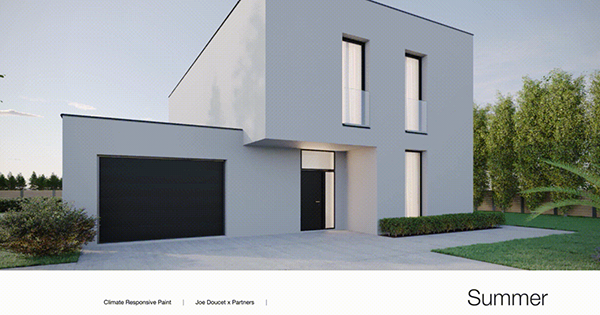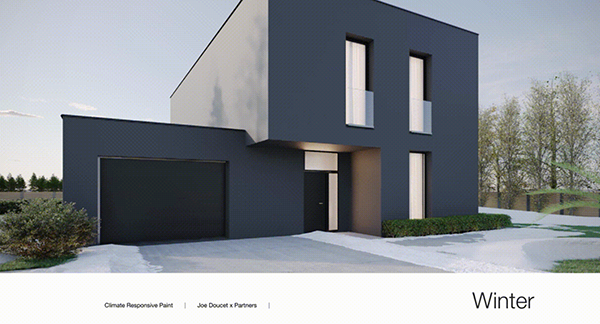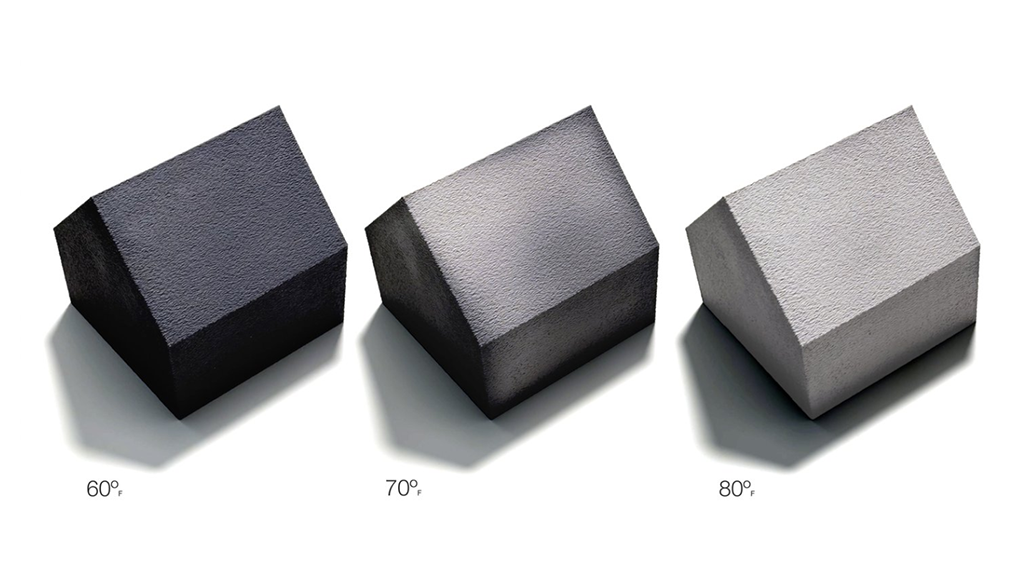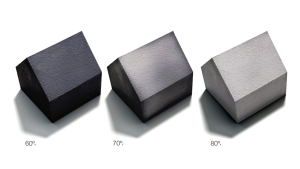Industrial designer Joe Doucet has developed an innovative climate-responsive paint that could revolutionize how buildings interact with their environment, Fast Company reported.
The groundbreaking thermochromic paint changes colour based on the outside temperature. Its inventor says, “By shifting with the seasons, colour passively reduces the energy needed to heat and cool a building by up to 25 per cent.”
The paint transitions from a dark grey to white at temperatures above 25° C. The colour-changing property allows buildings to adapt to seasonal temperature fluctuations:
- In summer, the paint turns white, reflecting heat and keeping the interior cooler.
- In winter, the paint remains dark, absorbing heat to maintain warmth.

Research shows that colour significantly impacts a building’s internal temperature:
- In summer, a white house can be approximately 12°F cooler internally than a black house.
- In winter, a black house can be about 7°F warmer internally than a white house.

The paint can be tinted to various colours. For example, a building could appear light brown in spring and summer and dark brown in fall and winter.
The technology has potential applications beyond residential homes, including:
- Schools
- Warehouses
- Factories
- Industrial facilities
- Climate-controlled buildings
After extensive testing and development, Doucet and his team created a formula that maintains its thermochromic properties for at least one year without degradation.
While the estimated cost is three to five times higher than standard paint, the energy savings could offset the initial investment. Doucet plans to license the patent-pending formula to existing paint manufacturers rather than start his own paint company.
As cities worldwide grapple with urban heat islands and increasing energy demands, climate-responsive paint offers a potential solution.





Recent Comments